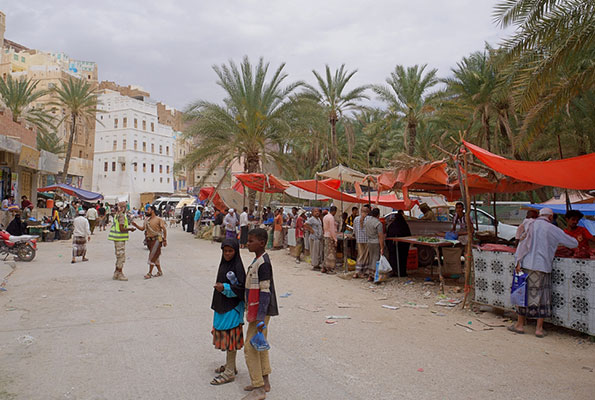Yemen has historically been among the MENA region’s poorest nations and is currently experiencing one of the greatest humanitarian catastrophes. Since the beginning of 2015, war has decimated the country’s economy, produced significant food insecurity, apart from destroying vital infrastructure. In 2023, the United Nations predicted that 24 million people would be at risk of starvation and sickness and that 14 million would urgently require help.
The UN first mediated a ceasefire in April 2022, and after it was triple-extended by the parties to the conflict, fighting reached its lowest point in eight years. However, the truce ran out of steam in October 2022, thus leaving the nation in danger of a resumption of hostilities. Additionally, the parties to the war continue to obstruct humanitarian access, earning Yemen the maximum possible ACAPS rating for these restrictions.
Although oil and gas reserves are Yemen’s main source of income, they are also the main reason for regional and global strife. Due to the country’s estimated 11 billion barrels of oil reserves spread among the Shabwa, Marib, and Sayun-Masila oil basins, oil production made up 70% of the general budgetary resources before the start of the war. Production fell from 150,000–200,000 barrels per day before the crisis started in 2014 to 55,000 barrels per day due to Saudi Arabia’s and its allies’ military engagement in the conflict.
Foreign oil firms are present in Yemen, making the government dependent on them and mostly on Saudi Arabia during the previous few decades. The Houthis warned shipping and oil corporations to halt operations because they were sick of the “plunder of sovereign riches.”
With Iran’s backing, the Houthis launched strikes on an export terminal in the Arabian Sea in the east of the country after the cease-fire expired on October 2nd, 2022, forcing an oil tanker to depart the location as it docked and ending any chance of the UN extending the cease-fire.
According to Abdullah Al-Saadi, Yemen’s permanent representative to the UN, “The country has lost one billion dollars due to the cessation of oil exports to pay salaries and improve public services,” which has disastrous effects on the populace and prompted the government to call for international pressure by destroying the Houthis’ infrastructure and essential facilities. The Ukraine conflict has made Yemen’s economic crisis worse. The fact about 23% of households live paycheck to paycheck shows the structural effects of a protracted battle.
Additionally, since 2016, the 1.2 million public employees in the nation have received irregular or no pay, undermining crucial public functions. Food and fuel have become expensive due to currency fluctuations and tight supply.
The Yemeni rial continued to devalue to historic lows in 2022 despite government reforms intended at stabilizing the currency, leading to sharp increases in food costs and the plight of more people in abject poverty. Trade disruptions, significant fuel supply shortages, and reduced humanitarian aid have all contributed to the rapid deterioration of socioeconomic conditions. Fragile economic conditions have been exacerbated by escalating violence and fragmented macroeconomic policy. An enormous humanitarian crisis continues, made worse by COVID-19 and the global commodity price increase, leaving many Yemenis dependent on aid and remittances.
A crisis brought on by a protracted conflict, the disruption of critical services, and rising fuel and food costs have been worsened by distortions caused by fragmented institutions and varying regulations across control lines. Yemen’s people have had a terrible impact.
Some 18 million Yemenis lack access to clean water and sanitation. Due to food instability and starvation, 16.2 million people need urgent emergency assistance. As a result, Yemen has had to deal with ongoing cases of diseases, including cholera, diphtheria, measles, and dengue fever.
The Yemeni riyal experienced sustained inflationary pressure in 2018 and 2019. Waves of currency depreciations also occurred in 2017. The disruption of financial services and infrastructure has significantly impacted the private sector’s operations. Over 40% of Yemeni households are now finding it challenging to purchase even the barest amount of food, and many of these homes have lost their main source of income. Before the crisis, about half of Yemen’s 29 million people lived in poverty, with women being the greatest at risk.
The likelihood of economic growth in 2023 and beyond will be largely dependent on how quickly the political and security situation improves, which will enable Yemen to reconstruct its economy and social system. At the start of Ramadan in April 2022, the UN declared a two-month ceasefire. Following talks facilitated by the Gulf Cooperation Council in Riyad, Yemen’s President Abdrabbuh Mansur Hadi delegated power to a “Presidential Leadership Council” (PLC).
In addition to a USD 3 billion economic package, the United Arab Emirates and the Kingdom of Saudi Arabia also offered USD 300 million in humanitarian aid. The financial package can assist in reducing price inflation, stabilizing the exchange rate, and covering the external account deficit. However, such one-time windfalls do not negate the necessity of fundamental reforms.



